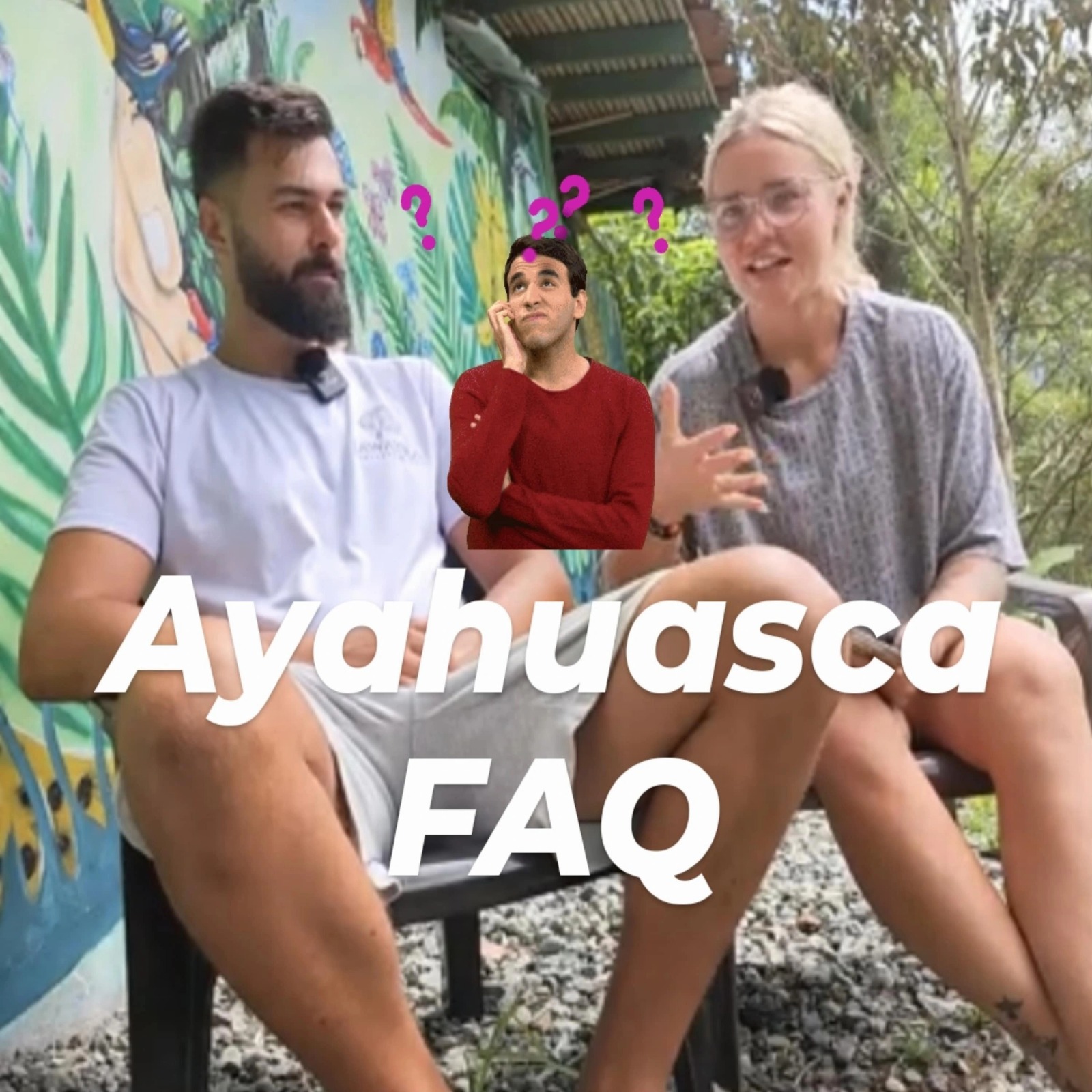In this wide-ranging conversation, retreat founder Sam Believ joins interviewer Emma O’Riley to discuss what ayahuasca truly is, how it works, and why this ancient brew continues to attract people seeking deep healing and self-understanding. Speaking with the calm assurance of experience, Sam offers a grounded look at one of the most mysterious and misunderstood medicines on Earth.
The Living Vine
Sam begins by clarifying what ayahuasca actually is. It’s not a single plant or drug, but a sacred combination of two main ingredients: the Banisteriopsis caapi vine, known as the “mother” or “spirit” of the brew, and a DMT-containing leaf, often Psychotria viridis or Chaliponga. When these are cooked together for hours, sometimes days, they form a dark, bitter tea.
The vine itself contains natural MAO inhibitors, which allow the DMT in the leaves to become orally active. Without the vine, the leaf alone would do nothing. Together, they open what Indigenous traditions call la puerta del alma — the door of the soul. Sam reminds listeners that this knowledge comes from thousands of years of Amazonian tradition. “It’s not a drug,” he says. “It’s a teacher.”
How It Works — From Chemistry to Consciousness
When Emma asks how ayahuasca works, Sam bridges science and spirituality. Biochemically, it’s simple enough: the MAO inhibitors keep the DMT from being broken down in the stomach, letting it reach the brain. But the real story, he says, lies in what happens inside the mind and heart.
Under ayahuasca, buried emotions, memories, and traumas rise to the surface. The experience can be visionary, but it’s rarely just visual. People may cry, purge, tremble, laugh, or feel waves of energy. Sam explains that these are not side effects but expressions of healing. “It’s like the body and spirit are having a conversation,” he says. “Ayahuasca shows you what you need to see, not always what you want to see.”
Safety, Setting, and the Role of the Facilitator
Both Sam and Emma stress that ayahuasca must be approached responsibly. When done without guidance or in unsafe environments, it can be psychologically destabilizing. A safe ceremony depends on four pillars: authentic medicine, experienced facilitators, proper preparation, and thoughtful integration.
Sam warns that some problems attributed to the brew actually come from poor facilitation or participants ignoring health precautions. “It’s medicine,” he says, “but like any medicine, it can harm if used incorrectly.” People taking antidepressants, for example, should avoid it entirely due to chemical interactions.
The facilitator’s role is not to lead participants through visions or control the ceremony, but to hold the container — maintaining safety, sacredness, and grounding energy. “A good facilitator doesn’t make your experience easier,” Sam explains. “They make it safer.”
The Real Work Happens After
Emma presses him on what happens after the ceremony — when participants return home, sometimes shaken, sometimes glowing. Sam is quick to point out that integration is the real test. “The medicine opens the door,” he says. “Walking through it is your job.”
Integration can mean journaling, therapy, meditation, or simply changing one’s lifestyle. Many people feel inspired to reconnect with family, improve their health, or pursue new creative or spiritual paths. But those who skip this step often find their insights fading. “Without integration,” Sam says, “it’s like planting seeds and never watering them.”
What Ayahuasca Can — and Cannot — Do
Emma asks whether ayahuasca can “cure” depression or anxiety. Sam smiles at the question. “Ayahuasca doesn’t cure anything,” he says. “It helps you see why you’re unwell.” Some participants experience rapid shifts — releasing grief, forgiving someone, or reconnecting with purpose — but it’s not guaranteed. For others, it’s the beginning of a much longer process.
He compares the medicine to a mirror: it reflects what’s already within. “If you’re ready to look, it will show you. If you resist, it will show you that, too.” The power of ayahuasca, he explains, lies not in escaping reality but facing it with honesty and courage.
Cultural Respect and Ethical Practice
As interest in ayahuasca grows worldwide, Sam urges respect for its Indigenous roots. The brew originates in the Amazon basin — a region whose tribes have used it for healing, community, and divination for centuries. “We have to honor where it comes from,” he says. “Westerners didn’t invent this; we’re borrowing wisdom that was preserved long before us.”
He also reminds listeners that ayahuasca exists in legal gray zones. Some countries allow its ceremonial use under religious protection; others prohibit it entirely. “Do your research,” he advises. “Legality doesn’t equal safety, and safety doesn’t always depend on legality. It’s about who you sit with and how.”
A Final Reflection
As the interview closes, Emma asks what keeps Sam devoted to this path. He pauses before answering: “Because it works — not in the sense of curing people overnight, but in how it brings them back to truth. It reminds us that healing isn’t outside of us. The medicine just helps us remember.”
The conversation leaves listeners with a grounded understanding of ayahuasca: not a psychedelic shortcut or mystical thrill, but a profound ceremony that blends chemistry, spirit, and ancient human wisdom. In Sam’s view, its real gift lies not in visions or revelations, but in the quiet integration that follows — when the teachings of the vine begin to take root in daily life.
Based on the Ayahuasca Podcast episode “All About Ayahuasca – Sam Believ Interviewed by Emma O’Riley.”

Sam Believ is the founder and CEO of LaWayra Ayahuasca Retreat, the best-rated Ayahuasca retreat in South America, with over 520 five-star Google reviews and an overall rating of 5 stars. After his life was transformed by Ayahuasca, he dedicated himself to spreading awareness about this ancestral medicine to help address the mental health crisis. Sam is committed to making Ayahuasca retreats affordable, accessible, and authentic, with a focus on care, integration, and the involvement of indigenous shamans. He is also the host of the Ayahuasca Podcast.


